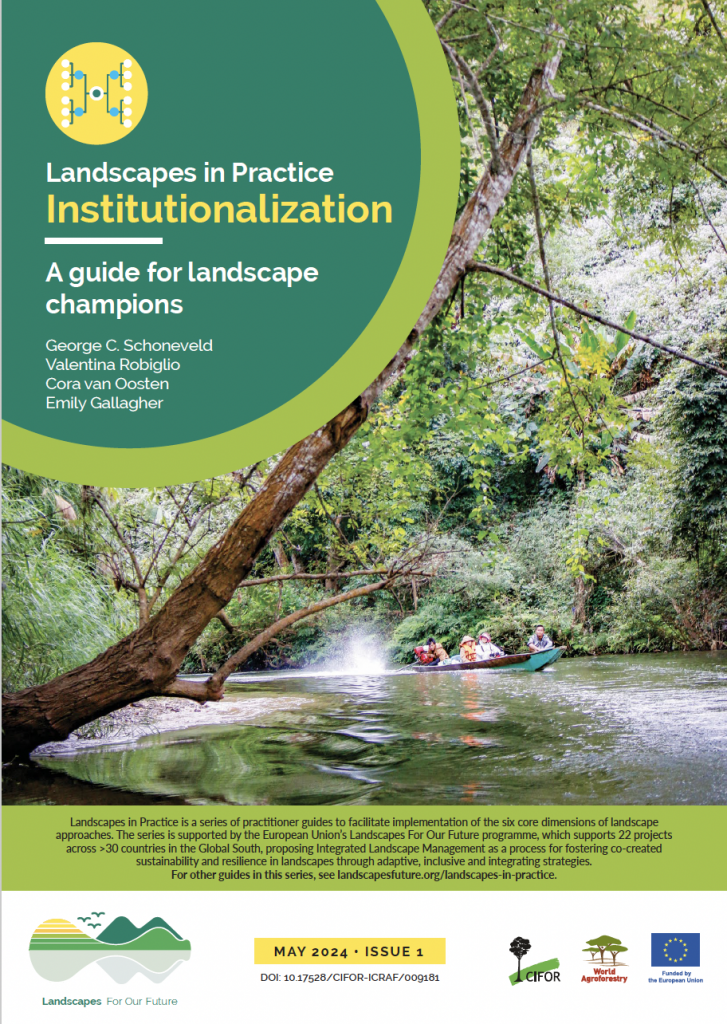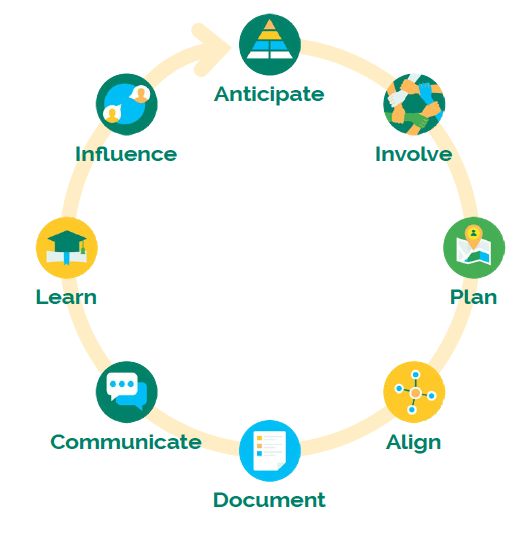
With landscape “champions” in mind, the authors set out to provide an overview of the state of the knowledge, intended to focus your thoughts and catalyse adaptive on-the-ground action.
Who are these champions? They’re the in-the-field practioners as well as all those who advocate for landscape approaches. If that’s you, read on for a summary of the paper. Better yet: download the full 12pp PDF.
Key messages
If the impact of a landscape intervention is to endure, effective ‘institutionalization’ is needed.
- This can be achieved by embedding participatory, adaptive and cross-sectoral planning and decision-making processes in existing institutions and systems.
- Institutionalization can strengthen a landscape initiative’s viability, continuity and resilience to disruption and political shifts. Plus it can open new avenues for influencing sustainable development policy and programming.
- Too little capacity, too few resources and too much emphasis on delivering short term, quantifiable impacts deter ‘landscape champions’ from effectively investing in institutionalization. As a result, there is a higher risk of their landscape initiatives losing momentum, especially when thought of only as ‘projects’.
- Based on experience gained monitoring and implementing landscapes initiatives, we propose an eight-step strategy that can landscape champions to more effectively institutionalize a landscape approach.

An ILM institutionalization strategy
The iterative eight-step strategy proposed by the authors on behalf of the Central Component of the Landscapes For Our Future programme is designed to harness the benefits of institutionalization while addressing barriers. It is contingent on effective implementation of other ILM dimensions and draws from firsthand implementation and evaluation experiences of development projects adopting landscape and jurisdictional approaches.
Champions can tailor this strategy by combining, skipping, or adjusting the sequence of steps to suit their specific context and needs.

- Anticipate: It is crucial to anticipate implementation barriers both within and beyond the landscape. This requires a participatory appraisal that helps identify strategic stakeholders and the structures, processes and capacities the initiative should aim to influence or build, based on the initiative’s common vision.
- Involve: Strategic stakeholders identified in Step 1 should be actively engaged early in the initiative’s relevant co-creation events and multi-stakeholder processes.
- Plan: Co-develop an institutionalization strategy with project (boundary) partners that addresses the challenges, builds synergies, and capitalizes on the opportunities identified in Step 1.
- Align: Align landscape initiatives with relevant internal and external policies, plans, strategies and institutional structures.
- Document: Systematically document successes, barriers and failures of the landscape initiative, particularly in relation to adoption, replication and scaling of landscape initiatives and associated solutions.
- Communicate: Strengthen engagement and awareness among both internal and external stakeholders by communicating initiatives’ progress, documented achievements, lessons learned and results.
- Learn: Facilitate vertical and horizontal learning by establishing spaces for stakeholders to exchange experiences and knowledge across scales and between sectors and societal domains.
- Influence: Once steps 1-7 have been completed, landscape stakeholders are better positioned to influence enabling environments.
Download the full paper for detail on each of these eight steps, as well as how to address barriers and leverage existing political commitments.



